
 India’s independence did not bring about the long sought for return of Rama Rajya and the light of dharma that the independence movement aspired to. The continuation of the darkness of adharma shifted from colonial rule to a new self-imposed and self-perpetuated colonial type exploitation by an arrogant socialist elite who had little understanding or appreciation of their own culture. – Dr David Frawley
India’s independence did not bring about the long sought for return of Rama Rajya and the light of dharma that the independence movement aspired to. The continuation of the darkness of adharma shifted from colonial rule to a new self-imposed and self-perpetuated colonial type exploitation by an arrogant socialist elite who had little understanding or appreciation of their own culture. – Dr David Frawley
Diwali celebrates the return of Sri Rama to Ayodhya after fourteen years of exile. This follows immediately after Rama’s great victory over Ravana and his recovery of his beloved wife Sita. As such, Rama’s return indicates the triumph of light over darkness and dharma over adharma. It marks the establishment of Rama Rajya, the rule of dharma that allows the flowering of our highest human and spiritual potentials.
Yet, metaphorically speaking, Ram’s exile from India, we could say, has lasted for centuries—including the first seventy years of India’s independence—though the wish for Rama’s return has remained. India’s independence did not bring about the long sought for return of Rama Rajya and the light of dharma that the independence movement aspired to. The continuation of the darkness of adharma shifted from colonial rule to a new self-imposed and self-perpetuated colonial type exploitation by an arrogant Delhi and socialist elite who had little understanding or appreciation of their own culture.
The aspiration for Rama Rajya that inspired the independence movement was derided and rejected by post-independence intellectuals and leaders who preferred to put their own images upon the country over that of Rama and teach their own opinions over the wisdom of the great seers and yogis. They covered the saffron of traditional India with the red of Marxism, sometimes painted by the blood of Hindus.
Today, both in India as a whole and in Uttar Pradesh, where Ayodhya is located—under the guidance of Narendra Modi at a national level and Yogi Adityanath at a state level—there is a new movement towards Rama Rajya, the rule of dharma and the honouring of Yoga. The aspiration to Rama Rajya may yet be fulfilled in coming years, though much work and struggle is required to assure it.
Certainly, the decisive turn towards Rama Rajya has been made and there can be no going back. Yet, the battle is far from over and there can be no relaxing of efforts or reduction in determination or resolve until all negative forces are entirely removed. Forces of cultural subversion, foreign attack and terrorism remain lingering in the shadows, hoping to continue their insidious assaults from behind the scenes.
This return of Rama Rajya is not the imposition of some out-of-date rigid Hindu law or Sharia on a helpless population as its opponents would bleakly portray. It is not politically regressive but spiritually progressive, advancing the cause of higher consciousness and oneness in the world. Such a new dharmic focus is desperately needed at a time in which humanity overall is confused about its true purpose and place in the cosmos, caught in social division and false beliefs, alienated from the greater universe.
This return of Rama promises a renaissance of India’s dharmic civilisation and yogic way of life. It sets the stage for a return of Lakshmi as prosperity for all, and a protection of the Earth, with a renewal of India’s magnificent sacred sites like Ayodhya and Varanasi. It is not some mere nostalgic dream from bygone eras but a future global vision of a higher humanity and a more kind and sacred way of life, where our inner consciousness can unfold. Rama Rajya as the rule of dharma is not the imposition of rigid codes or social engineering but an awakening of our inner connection to the cosmic reality both within and around us.
In this battle between light and darkness, we must awaken Hanuman within us, the inner magic of a higher motivation, a new energy, zeal and seeking of transcendence, as it necessitates that we leap beyond our boundaries born of ignorance and fear. We may physically reside in restricted time and space locations but our inner being stands far beyond them and need not be circumscribed by their boundaries. We can awaken an inner transformative power if our dedication is to the highest excellence.
Rama Rajya is the universal order of cosmic intelligence that we can enter into whenever we look beyond our personal limitations to the light of consciousness that is the basis of all existence. Diwali sustains the promise of an enlightened humanity, which we should dedicate our lives to help manifest. This is not a matter of mere material prosperity, science and technology, but an understanding of our true nature as cosmic beings, centers of boundless light and awareness. Jai Sri Ram! Jai Sita-Ram! – Swarajya, 19 October 2014
» Dr David Frawley (Pandit Vamadeva Shastri) is the director of the American Institute of Vedic Studies and the author of more than 30 books on yoga and vedic traditions. He tweets @davidfrawleyved.
Filed under: india | Tagged: ayodhya, hindu civilisation, india, rama, rama rajya, sri rama |


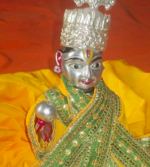






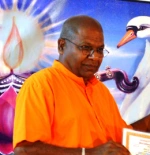


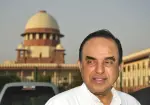







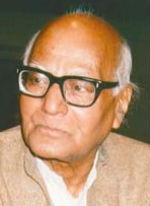

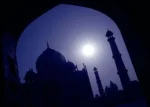




Shia Waqf Board chief says draft to resolve Ayodhya dispute peacefully will be ready by December 6 – Scroll Staff – Scroll-In – 7 Nov 2017
The Uttar Pradesh Shia Central Waqf Board on Tuesday said it will prepare a draft to peacefully resolve the Ayodhya dispute by December 6, the day the Babri Masjid was demolished in 1992, the Hindustan Times reported.
The chairperson of the board, Wasim Rizvi, said he will visit the city next week to meet seers and mahants, PTI reported. “I have already discussed terms and conditions with many of them and some petitioners for the draft proposal for an agreement to settle the dispute mutually,” he said.
At the meeting next week, they will “give the final touches to the accord”, Rizvi was quoted as saying by the Hindustan Times. When asked when they would be ready to unveil the pact, Rizvi replied, “Wait till December 6, by when something concrete would materialise.”
The Waqf Board chairperson said he was open to building a mosque away from the disputed site, and that he was empowered by the Waqf to decide on the matter.
He said the Allahabad High Court judgment partitioning the disputed land equally among the Waqf, the Nirmohi Akhara and the Hindu Mahasabha would not resolve the dispute. The Supreme Court is hearing 13 petitions challenging the Allahabad High Court verdict, which said the land should be divided equally among the three parties.
The row over the ownership of the 2.7 acres of the Ram Janmabhoomi-Babri Masjid land has raged on for decades. On December 6, 1992, Hindu volunteers gathered at the site had demolished the mosque. The incident had triggered communal riots across the country.
LikeLike
Ram Temple In Ayodhya Will Be Ready By Next Diwali, Says Subramanian Swamy – Swarajya Staff – Swarajya – ANI – Oct 16 2017
Senior Bharatiya Janata Party (BJP) leader Subramanian Swamy has said that the construction of proposed Ram Temple in Ayodhya, which is on halt now, will commence in August and be completed by next Diwali.
Swamy said, “By the time the review petition by the Supreme Court is over, we will start the construction of the Ram Temple in August and it will be ready by next Diwali.”
The Supreme Court will commence the final hearing of the long-standing Ram Janmabhoomi-Babri Masjid title dispute from 5 December, a day before the 25th anniversary of the demolition of the medieval-era structure.
Talking to ANI, Swamy said, “The Muslim parties in the case have argued that the Ram Janmabhoomi property is theirs because Mughal Emperor Babur captured it. But, the Allahabad High Court has already rejected their argument.”
“But I have brought in a new argument for which they have no reply. I have argued that I have a fundamental right to worship on the Ram Janmabhoomi,” he added.
He further said, “The Muslim parties are only asking for property right, which is an ordinary right. So by the the previous judgement of the top court, the fundamental right will triumph over the ordinary right. Therefore, there is no case and we are going to win it.”
Swamy further informed that the apex court hearing is based on documents, and not on any witnesses, so an undue delay is not possible in it.
The top court, after an intense deliberation for more than one-and-half-hours, on 12 August, reached a consensus on the commencement of the hearing on a total of 13 appeals filed against the 2010 judgement of the Allahabad High Court in four civil suits.
Another sect of the Muslims under the banner of Shia Central Waqf Board of Uttar Pradesh recently went to the court offering a solution that a mosque could be built in a Muslim-dominated area at a “reasonable distance” from the disputed site in Ayodhya. (ANI)
LikeLike
Reblogged this on Voices and Visions.
LikeLike